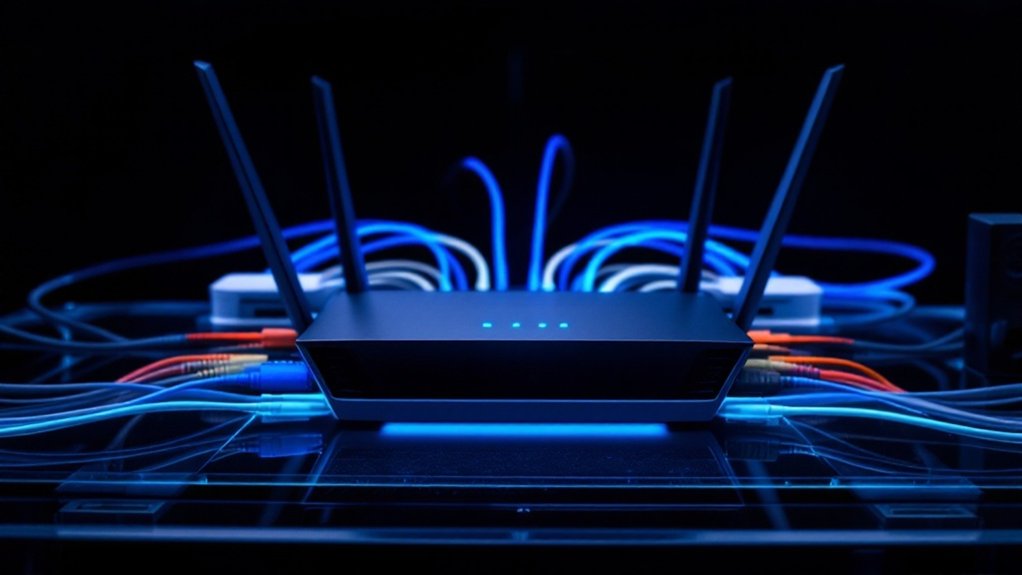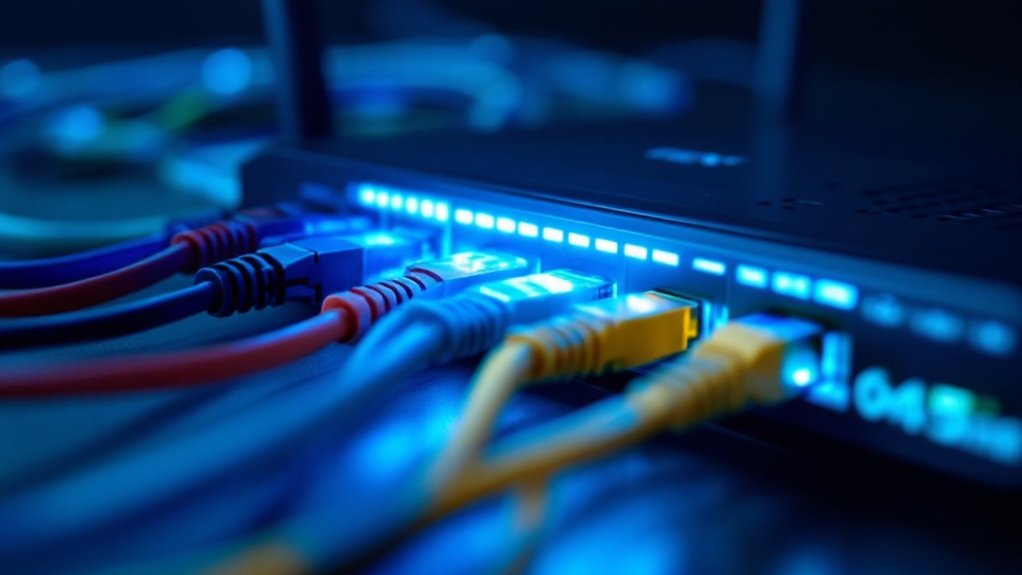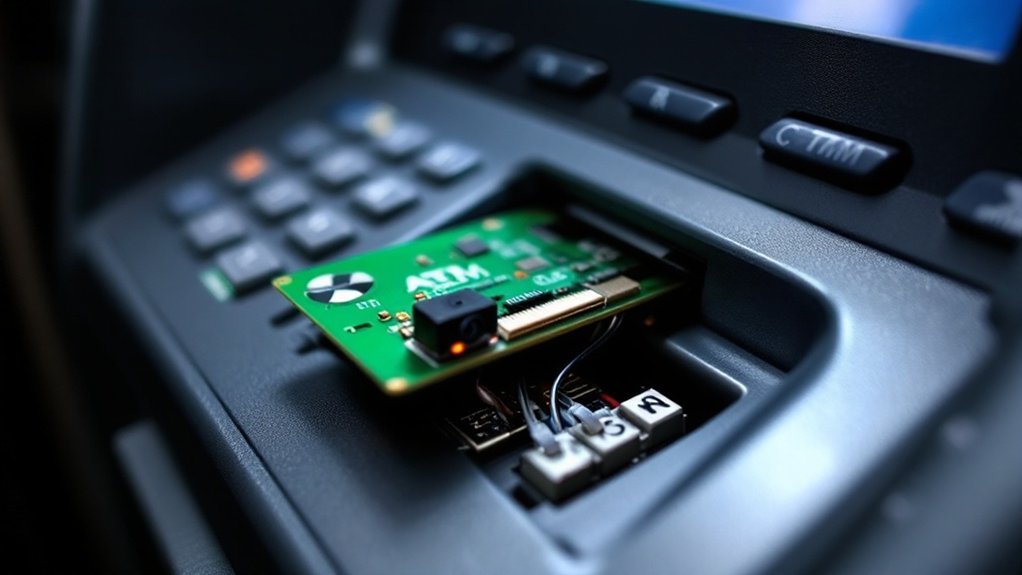Port forwarding is a networking technique that redirects communication requests between external devices and private networks through specific ports on a router. This process maps external ports on public IP addresses to internal devices, enabling remote access to services like game servers, security cameras, and websites hosted on private networks. The technique requires careful configuration of protocols, port numbers, and internal IP addresses through a router’s administration interface, as well as balancing accessibility with security measures. Understanding its mechanisms unlocks powerful networking capabilities.

Port forwarding, a significant networking technique used across the internet, allows external devices to connect directly with systems on private networks by redirecting communication requests through specific pathways. This process involves mapping external ports on public IP addresses to specific internal devices and ports, facilitating seamless communication between the public internet and private networks. The router acts as a gatekeeper, managing the translation between public and private IP addresses through Network Address Translation (NAT) protocols.
Port forwarding enables secure communication between external and internal networks through carefully mapped pathways, with routers serving as digital gatekeepers.
The implementation of port forwarding serves multiple important purposes in modern networking environments. Organizations and individuals utilize this technique to host game servers, websites, and remote desktop connections from home networks. Moreover, port forwarding facilitates access to security cameras, IoT devices, and network-attached storage systems from external locations, making it an integral component of remote network management. This technology enables efficient data traffic flow by directing incoming packets to their intended destinations within the network. Port forwarding can significantly enhance internet speeds by bypassing standard security procedures when properly configured.
The technical process operates through several distinct types of forwarding mechanisms. Local port forwarding connects local devices to remote services, whereas remote port forwarding permits external access to internal services. Dynamic port forwarding creates flexible secure tunnels and proxies, and static port forwarding establishes fixed mappings of ports to internal devices. UPnP port forwarding allows applications to configure port mappings automatically, streamlining the setup process.
Setting up port forwarding requires careful configuration through a router’s administration interface. Network administrators must specify the internal IP address of target devices, choose appropriate protocols (TCP, UDP, or both), and define external and internal port numbers.
Nevertheless, this configuration process demands careful attention to security considerations, as port forwarding can create potential vulnerabilities in network security by exposing internal services to the public internet.
The implementation of port forwarding must be balanced against security risks, including unauthorized access and DDoS attacks on exposed services. Network administrators typically combine port forwarding with strong authentication methods and careful monitoring to maintain network integrity while allowing necessary external access to internal resources. This balance between accessibility and security remains a significant consideration in modern network architecture.
Frequently Asked Questions
Can Port Forwarding Slow Down My Internet Connection Speed?
Port forwarding typically does not cause any significant reduction in internet connection speeds.
Whereas it may marginally increase router processing load, the impact on overall network performance is negligible.
In fact, port forwarding can improve speeds for specific applications by directing traffic more efficiently, potentially reducing download times by several milliseconds.
Network bandwidth and capacity remain unaffected, maintaining standard internet performance for all connected devices.
How Do I Know if My Router Supports Port Forwarding?
Users can verify router port forwarding support through several key methods.
First, accessing the router’s web interface allows examination of available settings, particularly looking for “Port Forwarding” or “Virtual Server” sections.
Furthermore, consulting the manufacturer’s website and technical documentation provides definitive capability information.
Online port checking tools and network diagnostic utilities can likewise confirm the router’s port forwarding functionality through practical testing.
Is Port Forwarding Safe for Gaming Consoles?
Port forwarding for gaming consoles presents moderate security risks but remains typically safe when proper precautions are implemented.
Modern gaming systems incorporate sturdy security features, whereas manufacturer updates regularly address vulnerabilities.
Crucial safety measures include enabling console firewalls, using strong passwords, forwarding only necessary ports, and maintaining current firmware.
These steps, combined with console-specific security protocols, effectively mitigate most potential threats whilst providing improved gaming connectivity.
Do I Need Static IP Address for Port Forwarding?
Although a static IP address is not strictly required for port forwarding, it is highly recommended for ideal functionality and reliability.
Dynamic IP addresses can change periodically, disrupting port forwarding configurations and requiring frequent updates. Network administrators typically recommend using either a manual static IP setup or DHCP reservation to guarantee consistent addressing.
Alternative solutions include dynamic DNS services, which can track IP changes automatically.
Can Multiple Devices Use the Same Forwarded Port Simultaneously?
Standard port forwarding does not support multiple devices using the same external port simultaneously because of technical limitations in router architecture.
When traffic arrives on a forwarded port, the router cannot differentiate which internal device should receive it.
Nevertheless, alternatives exist, including using different external ports for each device, implementing port triggering, or setting up a reverse proxy server to manage multiple internal connections through a single external port.









